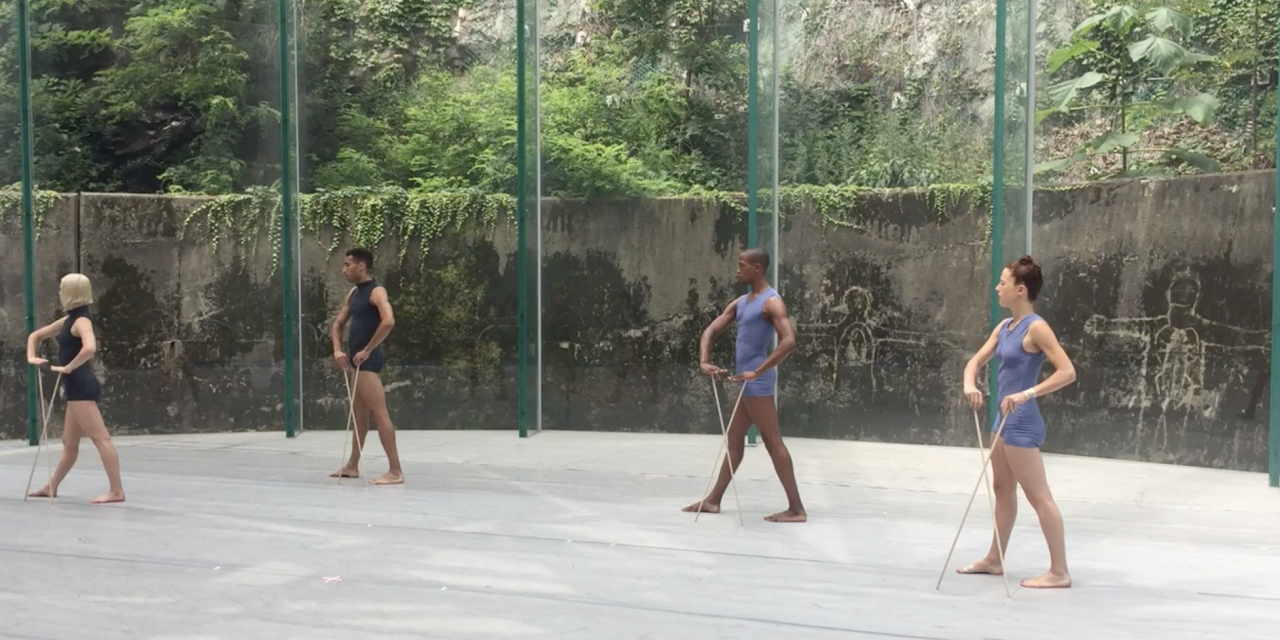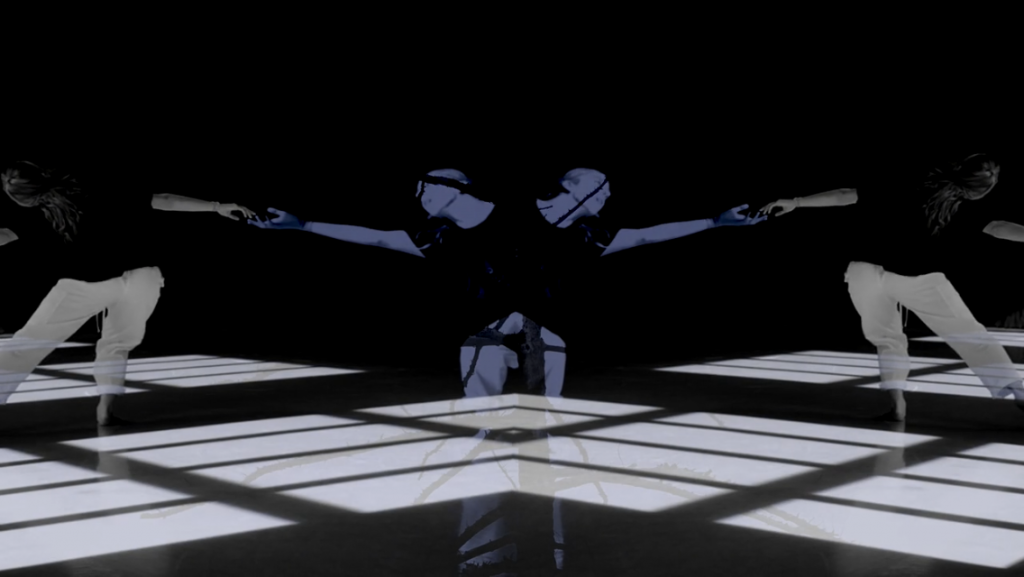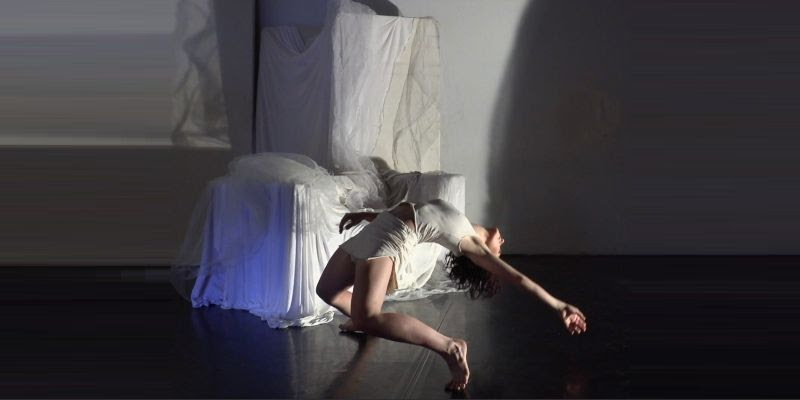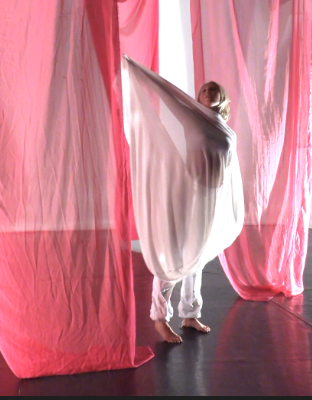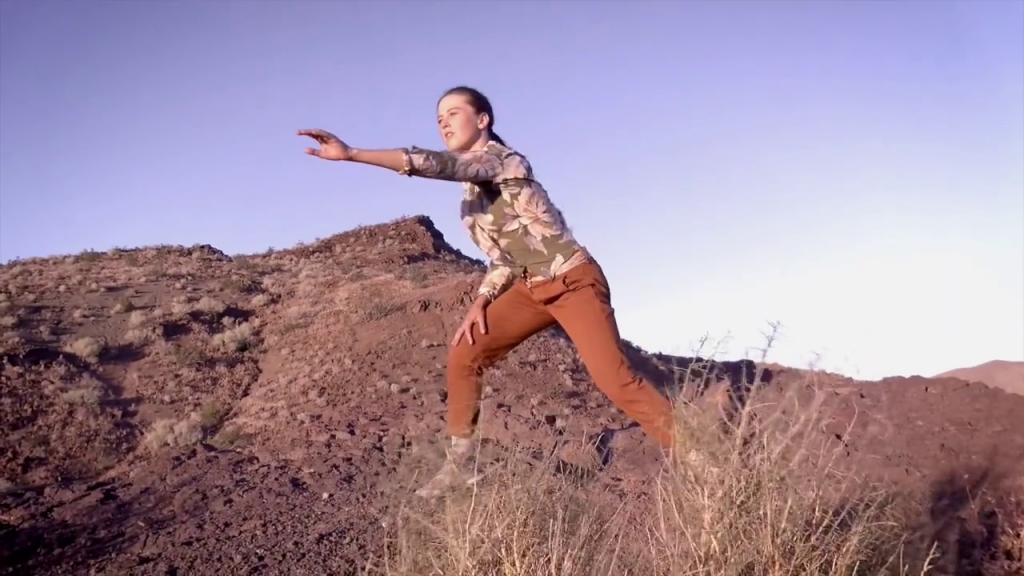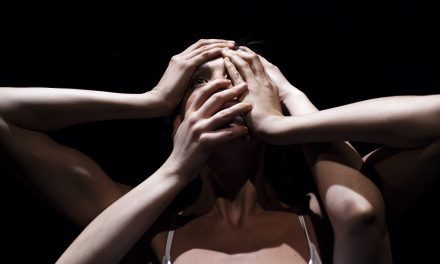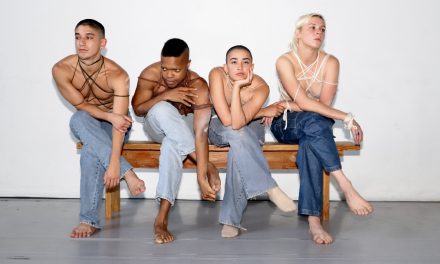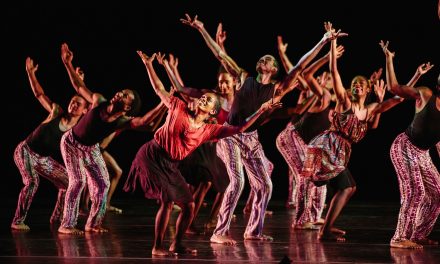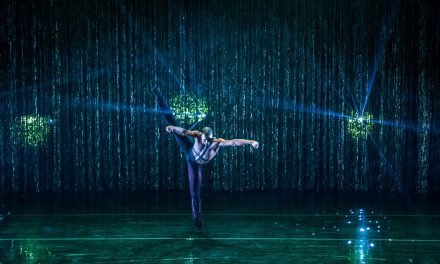Since March, the constant news of canceled performing arts productions has been an expected, but devastating side effect of 2020’s unending pandemic. Though we have all but kissed theater row goodbye until 2021, a silver lining shines through our need to shelter in place and spend all day glued to the computer: an opportunity to reach broader audiences by showcasing more dance online. Enter Deborah Brockus, artistic director of BrockusRED and producer of the Los Angeles Dance Festival (LADF). Through her partnership with Cal State LA’s Luckman Fine Arts Complex the city’s ninth annual celebration of contemporary dance was brought back to life. Originally scheduled for April of this year, a virtual version of LADF was available for streaming July 31 through August 2 on Luckman’s website and featured a series of 10 performances thematically reflecting our current state of quarantine through its depiction of small spaces and simple staging.
The festival began with Perspective, Charlotte Katherine Smith’s choreographed solo dance film created in part with a grant from the City of LA Department of Cultural Affairs (editor and director of photography: Glyn Gray, StirStudios). Smith’s bright set of various-sized mirrors in an all-white room provide an introspective angle to her self-serenade. Delicate spins paired with Zac Greenberg’s deep bass melodies invoke a calm ambience, occasionally disrupted by slightly erratic movements embodying moments of realization within an ongoing thought process. As the music’s pace quickens, so does her waltz, which transitions into pauses full of outstretched arms, hand-staring, and close-ups on the dancer’s face. One of Virtual LADF’s longer pieces, there is a repetitiveness to the routine, which works well, considering the number’s overall message. One final movement features Smith lying on the floor while hugging the instrument that kept her flowing throughout the work, personifying what might be an epiphany or peaceful mental surrender — a satisfying conclusion.
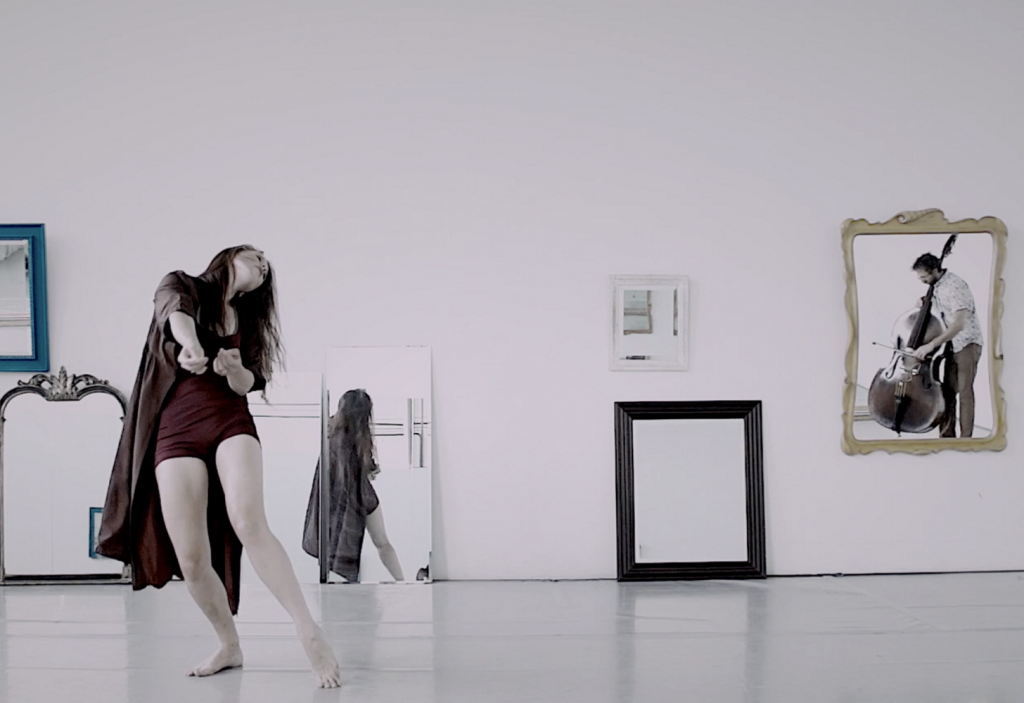
Charlotte Katherine Smith in her solo “Perspective” – LA Dance Festival 2020 – Photo courtesy of the artist.
Spirit Framed, choreographed and performed by Raymond Ejiofor, also created in part with a grant from LA’s Department of Cultural Affairs, takes on a vastly different tone (costumer, set designer, editor, and director of photography: Patrick Mignano, Hurricane Deck Productions). Danced to a futuristic soundscape by BenSound, this short piece, shot in black-and-white, activates a strong sense of intensity with punchier movements. Moments of vitality punctuated with side-to-side thrusts are broken apart by brief instances of long reaching limbs in slow awakening. Ejiofor commands the space around him with open arms and wide stances, taking center stage after angling around and behind a simple draped curtain, which procures a bit of depth in his tight dance corner.
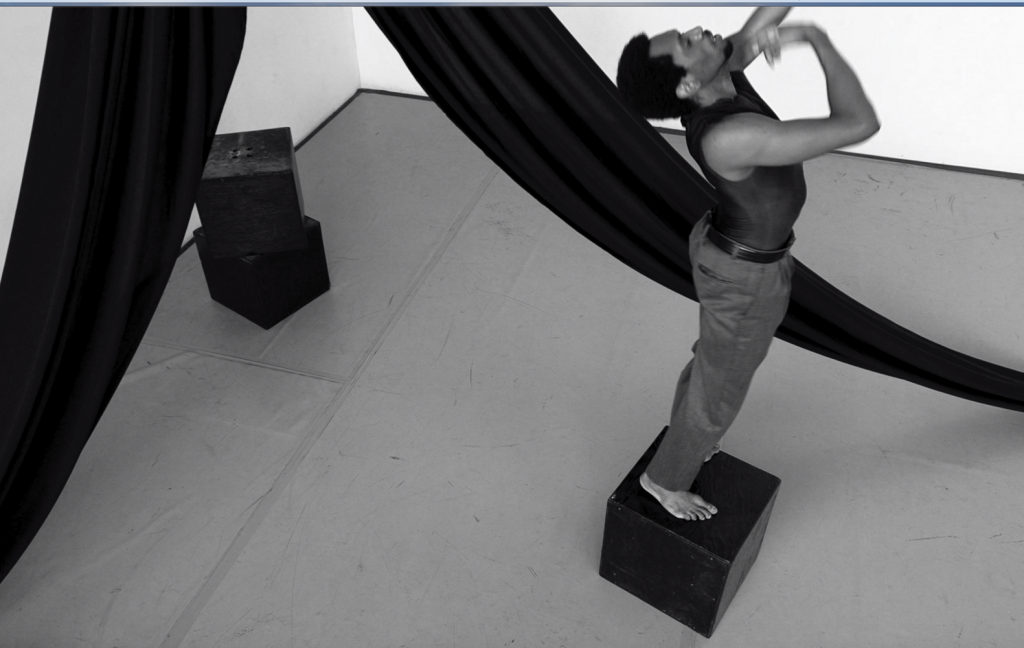
Raymond Ejiofor in his solo “Spirit Framed” – LA Dance Festival 2020 – Screen still courtesy of LADF
Kat Sauma’s Coalesce continues the vein of solo productions but establishes itself as the most film-oriented number in the entire lineup, easily making the most of this year’s festival format. Long, slow pans over close-ups of black-and-white–tinted hands form the beginning and end of her experimental work, sandwiching between them an array of overlapping shots that play with mirrored duality, bold splashes of color and cropping techniques which frame Sauma’s torso and legs in separate squares that shingle over one another diagonally. Coleman Moore’s musical score is an urgent soundtrack of bells, its tempo at times dictating quick footwork and adversely contradicting Sauma’s switches to careful steps and forward lurches. Her creative camerawork adds visual interest to an otherwise choreographically uncomplicated piece.
Sarah Elgart/Arrogant Elbow’s Shape of Memory: Sam is an excerpt from a larger site work, Shape of Memory, which premiered at Jacob’s Pillow in 2018. The film (shot by Steve Pyne) is staged with a single overhanging lightbulb lit to embody the proverbial explanation for performer Sam McReynolds’ discovery-filled expression. He begins by swirling the light fixture around his head, contorting as it descends upon his body before it is raised out of frame wherein he continues the dance alone. Nels Cline’s discordant tones conjure a meditative atmosphere soon interrupted by twitchy hands, jutting elbows, and sprawling limbs as McReynolds appears to be coming to terms with his own body. His hyperawareness leads him to physically force his legs to walk before he collapses on the ground. The music likewise shifts from the sound of an electric guitar to that of a jackhammer, growing frantic until man embraces melody and converts his jolted two-step into a smiley snap-and-swing, creating the largest emotional arc out of all of the pieces in the festival.
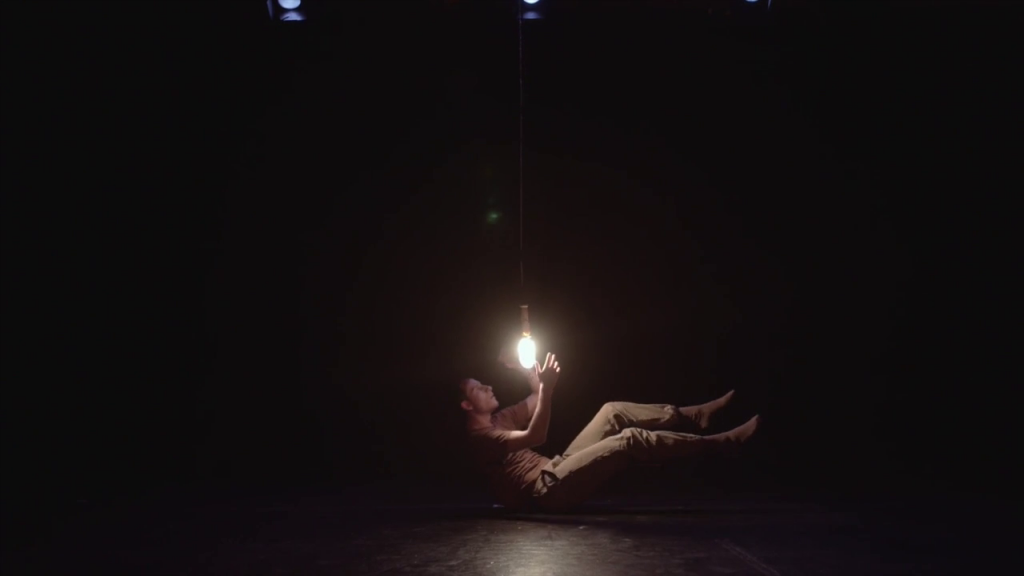
Sarah Elgart/Arrogant Elbow – Sam Reynolds in “Shape of Memory: Sam” – Screen captured created by LADC
Lines, Edges, Corners exemplifies BrockusRED’s signature style of movement and is by far the best of the three bodies of work Deborah Brockus curates for the festival. Consisting of Charlotte Smith, Hailey Transue, Daniel Moore, and Blair Pope as two couples dressed in black and blue ensembles, the movement in this piece is wonderfully enhanced by the dancers’ props: long sticks of wood, which serve as an extension of their bodies’ clean lines. The choreography sees the performers use the sticks as walking canes, crisscrossing them to maintain balance, before uniting them to outline squares on the floor, carving out neat spaces as though building the foundation for a house. When standing, the sticks alter as measuring tools used to maintain physical distance between partners, or marionette strings, the edges attaching to their extremities to guide graceful développés. The momentum remains flowy, reflecting Peer Askim’s soothing string-filled soundtrack. Once the sticks are tossed aside, the dancers lose balance before readjusting to an unaided existence with bigger movements and stronger presence in their enclosed outdoor glass arena.
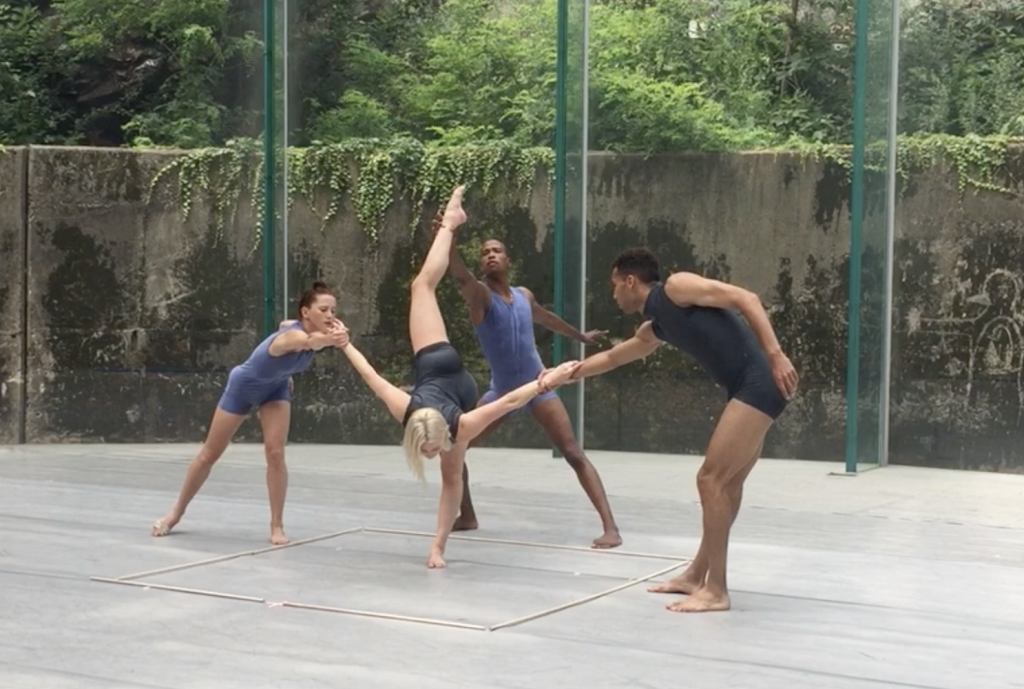
(L-R) Charlotte Smith, Hailey Transue, Daniel Moore, Blair Pope in “Lines, Edges, Corners” – Choreography by Deborah Brockus – Photo courtesy of BrockusRED
Also choreographed by Brockus, musically accompanied by Askim, and created in part with a grant from the Department of Cultural Affairs, Drift, Inner Landscape stars BrockusRED’s Julienne Mackey in what appears to be a closed set staged entirely in white, with large sheets draped over assorted unused pieces of furniture (set designer and costumer: Brockus; editor and director of photography: Mignano). Similar to Spirit Framed, Drift, Inner Landscape is danced in a corner. But whereas Ejiofor is more action-oriented, Mackey is pensive, often melancholic with her head bent low so that her hair predominantly hides her face from the camera. While constantly staring at her hands, there is a feeling of frustration that comes across in her sharp expansions and backward lunges. However, Mackey’s expressions twist into curly smiles when she finally makes eye contact with the viewer, countering her presentation of a trapped soul with a smirk of satisfaction, which adds a sneaky layer of complexity that leaves the audience questioning her character’s desires.
Great Beyond is unfortunately one of the weaker works in the festival showcase — a piece that comes across as aimless and ordinary in its portrayal of BrockusRED’s dancers finding their way across a closed-curtained set in low light. Though Cersha Burn, Leah Hamel, Moises Josue Michel, Mackey, Luciana Johnson, Dominique McDougal, and Rein Short (also credited as choreographers) move well with their backward shuffles and purposely unsteady gait, their individual routines feel disconnected, and the piece’s tribute to Stephen Hawking is unclear. The finale, which involves the slow, dragging stage right removal of the dance tarp, its embedded lights reminiscent of stars and knowledge, is the dance’s highlight and most symbolic moment.
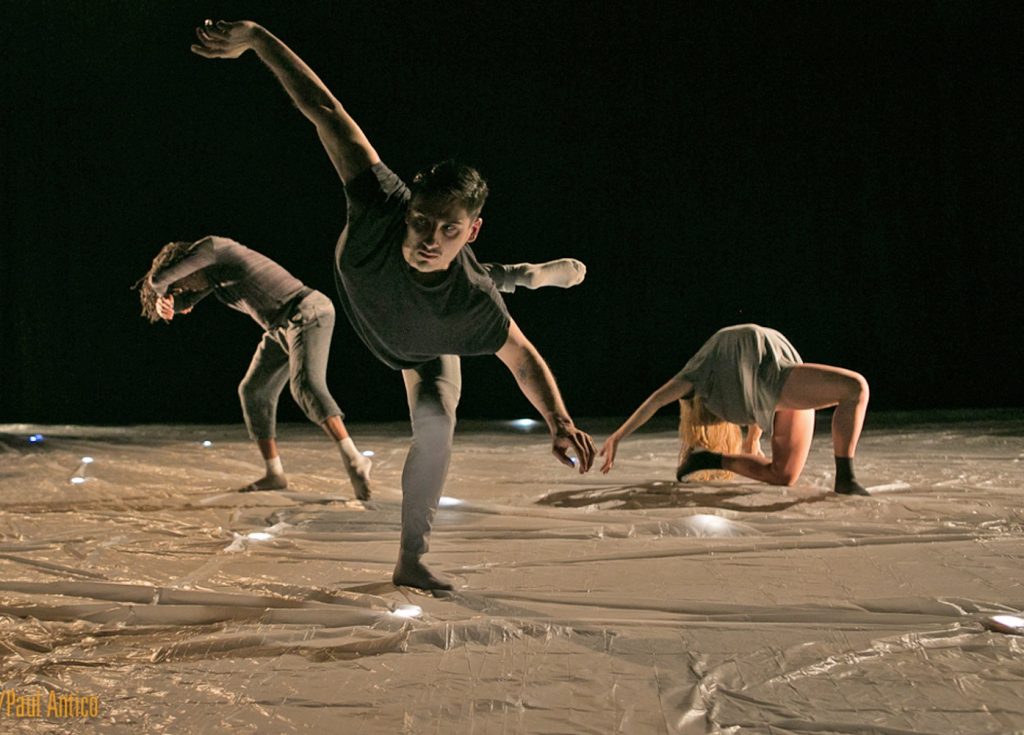
Leah Hammel Moises Josue, Michel Luciana Johnson in “The Great Beyond” by Deborah Brockus – Photo by Denise Leitner
1,000 by Hailey Transue brings together an airy, vocalized melody by BenSound with an equally attractive set interspersed with thin hangings of translucent red fabric over a predominantly white background (set designer and editor: Brockus; director of photography: Mignano). Transue’s choreography is subtle and pretty, with glowing closeups of her smiling face as she takes turns covering and uncovering herself in a thick white sheet, while effortlessly gliding between the tulle drapes. Though pleasant to behold, the piece, much like Great Beyond, lacks coherent purpose, feeling more like an unfinished work, which might fare better as part of a greater or more developed production.
Charlotte Katherine Smith’s second piece for Virtual LADF is Gratitude, a variation of Les Petits Plaisirs De Vie (Little Pleasures of Life) shown in 2019’s LADF FRINGE show. Performed with half of last year’s cast — Smith, Leslie Duner Alvarez, and Hyosun Choi — and music by Benjamin Marx, Gratitude maintains the original’s tranquil and hopeful theme. Warm light, wistful glances and strong bonds between the performers create a comforting contrast to the rest of the lineup, emphasizing the general feelings many of us have been craving during the pandemic: closeness and unity.
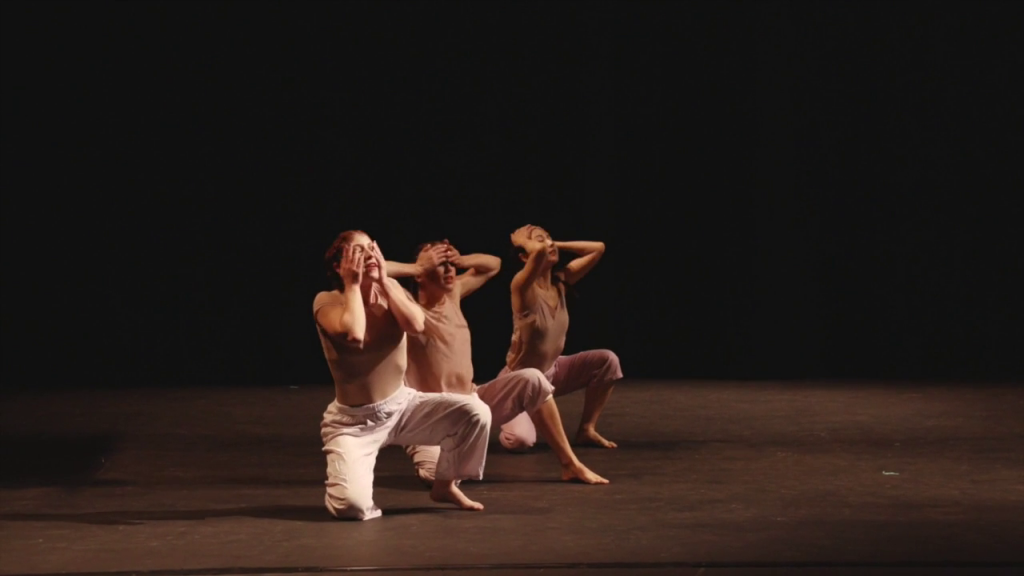
(L-R) Leslie Duner Alvarez, Charlotte Smith, Hyosun Choi in “Gratitude” by Charolette Smith – Screen capture created by LADC
Sixth Sense, Smith’s final piece, wraps up the festival with a change of pace: a fully outdoor production. Pairing up once again with Greenberg’s musical talent, the film is an intuitive look at perception, which pleasantly brings the lineup back full circle to the opening piece, encouraging a second viewing of Virtual LADF’s hour-long stream. Performed by Smith, Sixth Sense follows her journey through Joshua Tree’s windy, sun-drenched desertscape, up a hillside to a flat mesa. Throughout the work she appears to be looking for something, her eyes fixed on the horizon. Smith occasionally smiles when she spots the cellist on a distant hill, but otherwise meditates as she lies down on the floor and begins to stretch out her legs, shifting her body from side to side. Though her movements are simple, the rocking is enhanced by quick panning shots, which distort the direction of her body, often making it appear as though she is falling off of the hill. The disorientation knocks the viewer for a loop, intentionally disrupting and upending the choreography, similarly to Sauma’s Coalesce. Sixth Sense however more solidly reflects an altered state of mind and a dizzying sense of self. The Director and Director of Photography: Scott Kelley, Editor: Jose Hernandez.
The 10 works featured in Virtual LADF are a reassuring testament to “the show most go on,” providing audiences with a relatable mental break from the impending issues surrounding the world at large, while bookmarking one of the most intense chapters in theater’s history. Art adapts and creative pauses elapse.
Written by Lara J. Altunian for LA Dance Chronicle.
Featured image: (L-R) Hailey Transue, Blair Pope, Daniel Moore, Charolette Smith in Lines, Edges, Corners by Deborah Brockus – Screen shot courtesy of BrockusRED

